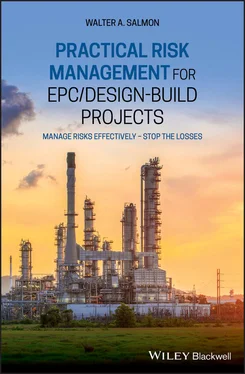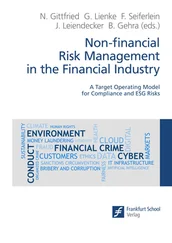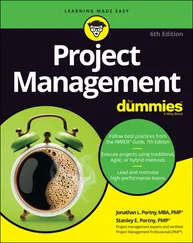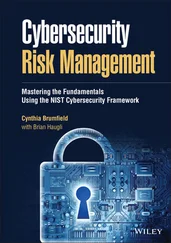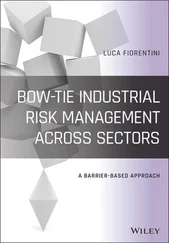I do not pretend that the advice in my book is intended to be a balanced document equally reflecting the interests of both parties to an EPC or Design-Build Contract (i.e. both the Employer and the Contractor). On the contrary, I have written primarily for the benefit of Contractors. I have therefore deliberately avoided mentioning situations where the Employer could take advantage of the Contractor. Having said that, nowhere do I make any suggestions that amount to the Contractor ripping off the Employer; but putting the Contractor into a legitimately stronger position, most certainly ‘yes’. The purpose of my book is simply to show where managing the risks better will prevent unnecessary losses for the Contractor. Of course, nothing prevents a member of the Employer's Team from reading this book, learning where the Contractor is most likely not to be managing risks properly, and then using that knowledge to defeat the Contractor's claim for extra time and/or money. The way for Contractors to overcome that problem is for them to sharpen up their Project Risk Management capabilities.
I included the term ‘Design-Build’ in the title of this book, since I consider that there are only subtle differences between how EPC Projects and Design-Build Projects are set up and run. The reality is that the risks I cover in this book can apply equally to both types of Project since, under each of the different arrangements, the responsibility for the design work (as well as the procurement and construction work typical to all construction Projects) falls to the Contractor. I have therefore opted in later chapters not to repeat the term ‘Design-Build’ unless I felt it was particularly necessary to do so.
In an effort to deal with most of the major problems that could be encountered, I have taken into consideration the worst-case contractual scenario I can think of in respect of the risks that a Contractor could possibly face in undertaking an EPC Project. That is where the Contractor is required to submit a lump-sum bid for an overseas Project in a developing country for a specialised process plant (such as an oil refinery), in the situation where the Invitation to Bid documentation issued by the Employer comprises only:
1 an incomplete Conceptual Design;
2 an outline Functional Specification that requires finalisation during the bid negotiation phase (i.e. no detailed specifications are provided);
3 a preliminary Plot Plan (i.e. not a fixed layout) that likewise needs to be firmed up in the bid negotiation period;
4 a mixed complement of loosely coordinated technical and administrative requirements that contain many references to third-party standards that sometimes conflict with each other; and
5 a set of contractual requirements that are heavily biased in the Employer's favour.
The foregoing list of inadequate documentation is a far cry from that which the International Federation of Consulting Engineers (more commonly referred to as ‘FIDIC’) envisages for EPC Projects (i.e. detailed, specific Employer's Requirements are expected as a norm). 5 However, I have personally experienced working on and resolving the problems for Projects where one or more of the above inadequacies occurred (and one Project where they all occurred), although I am not at liberty to identify those Projects here. I am, however, certain that such unfairly and awkwardly constructed Projects will keep appearing, just as long as there are Contractors around who are desperate for whatever work they can get their hands on in the location they wish to build their future in.
I have had a number of people who have read some of my observations of where things went wrong on construction projects say words to the effect of ‘it's just bad management’, as if telling people to employ ‘good management’ would have miraculously cured the problems I encountered. My stance is that the many people I observed suffering the negative effects of their own poor management were usually completely unaware of what they had done wrong (or had failed to do correctly). Knowing that you have to employ good management is very different from knowing what good management is. The purpose of this book is therefore to divulge what I myself have seen go wrong, and to offer my advice as to how such situations could have been handled better. My hope is that this will lead to sound Project Risk Management being put into practice more often.
1.2 The Book's Content and Structure
I wish to stress that the core content of this book is to be found in Chapter 6(Project Roles, Functions and Responsibilities), which sets out, over the course of 26 sections, what I consider the Contractor's key management personnel must do (or avoid doing) in order to ensure the success of a Project. However, before launching into the detailed nitty-gritty of Project Risk Management for EPC Projects at a practical level, I feel that there are a number of important matters that need to be aired and/or straightened out first. This is largely because I have received a lot of negative comments over the years from people in the construction industry about the EPC/Design-Build concept of Project implementation. Very often, such comments came from those who had little or no experience of what is involved, so their negative comments were perhaps not surprising.
The principal negative comments against the EPC approach I received were as follows:
1 Too many Contractors working on EPC Projects have failed miserably to achieve the time and cost objectives. As McKinsey & Company found in 2017, Project durations have often been horribly extended and the final costs have quite regularly far exceeded the original budgets. 6 (This does not appear to be as big an issue for Design-Build Projects, perhaps because their application is often to much smaller undertakings (private residences being an example). Such Projects are also often carried out by highly specialised teams with tried-and-tested technology [for example, cold storage building contractors, swimming pool installers and prefabricated building suppliers]. In such cases, the risk sharing between the Contractor and the Employer seems to be much more evenly balanced than on EPC Projects [especially when compared to the fixed-price, major turnkey ones], as was observed by Banik and Hannan. 7 )
2 The Contractor is responsible for and has complete control over at least the detailed design work, and may therefore be tempted to skimp on the quality of the finished facility wherever it seems possible to get away with doing that.
3 The Employer is not able to exercise control as to which Subcontractors or Vendors are selected for the Project. This is contrary to what is often done under the Traditional Contracting approach, where it is very common for the Employer to appoint such third parties and directly contract with them (thus giving the Employer a great deal of control over those entities).
I have to say that the foregoing concerns are not unrealistic. However, there are ways in which an Employer can exercise control over each of those issues to get what every Employer requires from a completed construction development of any size, namely:
1 safe completion of the Project on time and within budget, and
2 a first-class facility that fully meets the functional, operational, performance, reliability, availability, maintainability, and safety requirements.
To demonstrate that an EPC/Design-Build approach is every bit as worthwhile and valid from an Employer's point of view as the Traditional Contracting route, I have therefore included extensive notes about the traditional procurement approach to Project implementation, and contrasted those with both the EPC and Design-Build procurement routes. These details can be found in Chapter 2(Construction Project Implementation Routes) and Chapter 3(EPC Project Risk Management Overview). I have also provided a substantial amount of background detail about EPC Projects in particular: both Chapter 4(EPC Project Pre-Implementation Problems) and Chapter 5(Overseas EPC Project Preparatory Work) deal with different aspects of this topic.
Читать дальше
